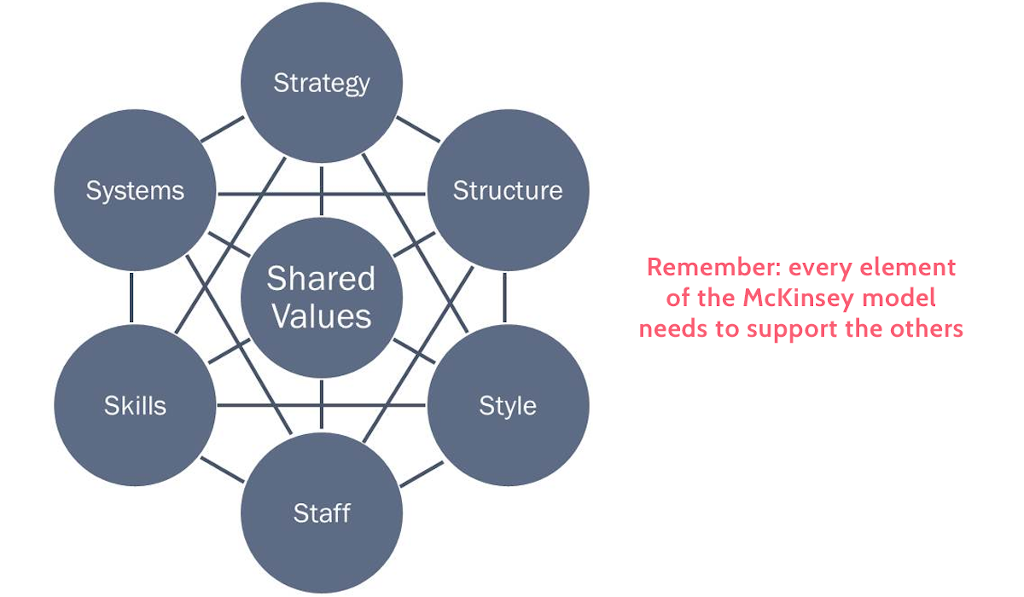The McKinsey 7-S Model is a great way to analyze coherence within your company. Important if you know that you need change, but you are not sure what to do. By running this checklist, you will understand what you need to do to obtain your objectives.
McKinsey 7-S Model: An introduction
The McKinsey 7-S Model was developed by McKinsey and Company in the 1980's. Specifically, it was developed by Robert H. Waterman and Tom Peters.
The McKinsey 7-S Model analyzes the following 7 aspects of your company, detailing how each impact one another:
Hard S's - Driven by management, more tangible
- Strategy
- Structure
- Systems
Soft S's - Driven by culture, less tangeable
- Shared values
- Style
- Staff
- Skills
The aim is to highlight the changes you need to make to create a united approach to business. The model can assist with:
- Organizational change
- Mergers and acquisitions
- Implementation of a new strategy
- Understanding the weaknesses (blind spots) of an organization
What's good about it
The 7-S model shows weaknesses in your company. The model highlights areas that require the most attention for the deployment of change. Beyond that, the model makes sure that every aspect of a company supports others to give a formidable business plan that is strong and flexible to further change.
What's bad about it
Running the 7S model is a long process. It is unlikely that one person will have the knowledge required to assess every element of your company meaning extra time and resources must be dedicated to build the overview and assess viable changes.
How to use this checklist
At the beginning of this checklist, you will be presented with a set of specialized questions given as form fields. You are required to populate each form field with your data.
The checklist is broken down into the 7 stages of McKinsey's 7-S Model:
- Step 1 - Strategy
- Step 2 - Structure
- Step 3 - Style
- Step 4 - Staff
- Step 5 - Skills
- Step 6 - Systems
- Step 7 - Shared values
At the end of each stage, your supervisor/manager will review your work using Process Street's approvals feature. Features used in this template include:
- Stop tasks - To ensure task order.
- Dynamic due dates - To make sure your initiative is reviewed on time.
- Role assignment - To delegate tasks within your team ensuring your supervisors are appropriately assigned to the review tasks.
- Approvals - Tasks can be accepted, rejected, and rejected with comments.










